"Statistics reveal that over 5,000 motorcyclists annually lose their lives in avoidable accidents—mastering safe riding techniques isn't just wise; it can be lifesaving."
Why Safe Riding Techniques Are Essential for Every Motorcycle Rider
**Safe riding techniques** are not just guidelines; they are the difference between a routine ride and a life-changing accident. Every motorcycle rider faces risks unique to riding a motorcycle: limited visibility to car drivers, less protection in collisions, and the challenge of navigating unpredictable road and weather conditions. Understanding and using proven safe riding techniques significantly reduces the risk of crashes by enhancing your awareness of motorcycling hazards, promoting better control of your machine, and sharpening your ability to react effectively when surprise situations occur.
- How understanding safe riding techniques reduces risk
- Real-world situations where safe riding made the difference
- Key mistakes that lead to dangerous crashes
Take, for instance, situations where a motorcycle rider spots a sudden obstacle—a patch of gravel or a car abruptly merging. With the right motorcycle safety foundation, such as using planned escape paths, keeping the front tire aligned, and maintaining a safe following distance, many disaster scenarios are avoided. Unfortunately, many motorcycle riders make the mistake of reacting late, applying the front brake abruptly without prepping the brake lever, or failing to anticipate the movement of car drivers, which often leads to preventable collisions. By learning from these common mistakes and integrating defensive motorcycle riding strategies, riders can stay safe and enjoy a good ride every time they hit the open road.
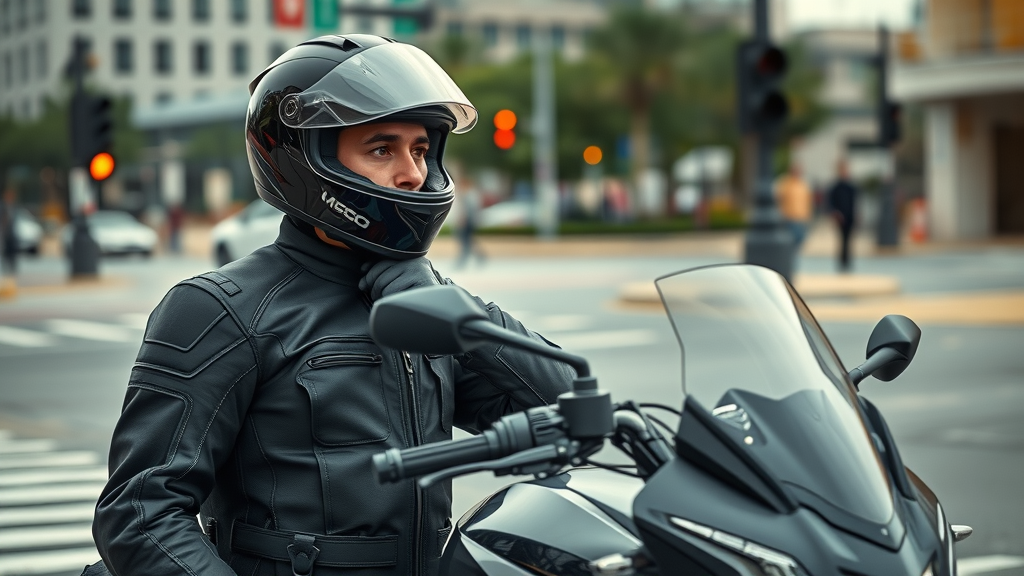
What You'll Gain: A Fast-Track Guide to Safe Riding Techniques
If you're looking for actionable insights and fast-track guidance to mastering **safe riding techniques**, this article is your roadmap. You'll gain the knowledge to minimize risks, protect yourself, and make every ride safe—whether you're a new or seasoned motorcycle rider. We break down complex motorcycle safety practices into clear, practical steps that fit busy lives.
- Crucial knowledge for every motorcycle rider
- Actionable steps for motorcycle safety
- Insights into motorcycle riding practices
Through easy-to-understand explanations, examples from real-life motorcycle safety scenarios, and expert riding techniques, you'll learn how to avoid riding pitfalls and stay safe on every ride. Committing to these principles means you won’t just survive on two wheels—you’ll thrive on them.
Key Principles Underpinning Safe Riding Techniques
The Core Elements of Motorcycle Safety
At the heart of safe riding techniques are essential principles that form the backbone of every secure journey. The most important of these is rider awareness: a sharp, ongoing observation of your surroundings, traffic patterns, and common road hazards. The ability to adapt quickly—whether reacting to a car driver's mistake or variable weather—separates safe motorcycle riders from those at greater risk. Defensive motorcycle riding strategies ensure you consistently anticipate trouble and develop planned escape paths, a cornerstone for motorcycle safety.
- Awareness and adaptability
- Defensive motorcycle riding strategies
- Common hazards faced by motorcycle riders
Defensive riding drills into every motorcycle rider the significance of not just “riding a motorcycle,” but of reading the intentions of car drivers and other motorcycle riders sharing the open road. From identifying collision traps at intersections to maintaining safe distances in heavy traffic, these safety measures are proven to save lives. By integrating these defensive habits, riders drastically minimize the chances of needing an emergency stop or risky front brake maneuver at the last second.
Developing Safe Riding Habits: A Step-by-Step Approach
Preparation Before Riding a Motorcycle
Establishing a habit of thorough pre-ride inspections builds a foundation for safe riding. Before every trip, check fluid levels, tire condition, brakes, and lights. It may sound basic, but these few minutes can be the difference between a good ride and a hazardous one. Equipping yourself is just as vital—select helmets, jackets, gloves, and boots with proven safety ratings and high vis features for maximum protection. The quality of your protective equipment directly influences your safety in both minor and major incidents.
- Pre-ride inspections
- Right gear for optimal motorcycle safety
- Essential equipment for motorcycle riders
The essentials extend further to emergency kits, phone chargers, and visibility aids. Prioritizing these details demonstrates self-discipline—a hallmark of safe motorcycle riders. Neglecting preparation, such as overlooking a worn front tire or incomplete gear, is among the most common and avoidable causes of accidents. Make your safety routine as ingrained as donning your helmet.
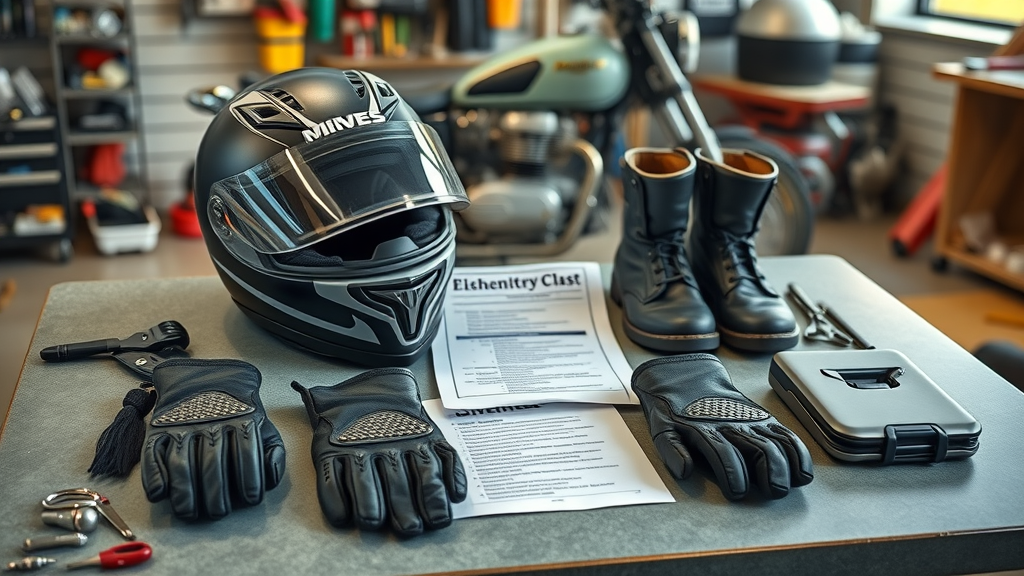
On the Road: Safe Riding in Action
Mastering safe riding techniques goes beyond preparation—applying them while riding a motorcycle changes your level of risk. Maintain proper lane position to increase visibility, stay out of blind spots, and leave pre-planned escape paths open. Proactively manage your speed, especially at intersections or when passing parked cars, since car drivers may open doors or pull out unexpectedly.
- Maintaining proper lane positioning
- Speed management
- Anticipating and reacting to hazards
Anticipation is your best defense; scan far ahead for potential hazards, use throttle blip and gentle braking to adjust your speed, and always have an emergency stop plan ready. By honing these riding techniques, you're prepared to react instinctively to unforeseen dangers, which can make all the difference between a close call and a crash. Staying alert and adaptive makes every journey a safe riding experience.
Common Mistakes Motorcycle Riders Make and How to Avoid Them
Many motorcycle riders are caught off-guard by situations that could have been prevented by well-practiced safe riding techniques . A frequent error is target fixation—staring at hazards like potholes or cars—instead of looking for open escape paths. Riders sometimes overestimate their skill at low speeds, lose balance, or crowd the vehicle ahead, limiting time and space to react. Learning to stay mentally present and avoid common pitfalls is foundational to all advanced riding.
Inadequate use of protective gear is another widespread mistake. Failing to wear high vis jackets, armored gloves, or sturdy boots increases risk not just in a crash, but in everyday incidents involving sudden stops or unexpected car driver actions. Overconfidence, especially after completing formal training or online courses, often leads to neglecting continuous learning—a key reason to regularly reassess and improve your skills.
Finally, skipping post-ride feedback—where you assess what went well or could be improved—prevents growth as a safe motorcycle rider. Embracing a mindset of continuous improvement keeps you focused on avoiding riding errors every time you get on your bike.
Mastering Defensive Motorcycle Riding Techniques
Managing Distance and Following the Safest Riding Formation
Defensive motorcycle riding means taking control of your safety by maintaining optimal distance from other vehicles and adopting the safest formation during group rides. The staggered formation allows riders optimal visibility and the ability to react independently to hazards. In tight turns, switch to a single file for maximum control and to avoid collision traps. Group motorcycle riding etiquette includes clear communication and never pressuring others beyond their experience level.
- Staggered formation benefits
- When to use single and double file
- Group motorcycle riding etiquette
Respecting each other's space, especially amid unpredictable car drivers, prevents pile-ups and leaves everyone with open escape paths. Whether you're riding with friends or joining a motorcycle club, sticking to tried-and-true formations and following group safety rules is crucial for safe riding.
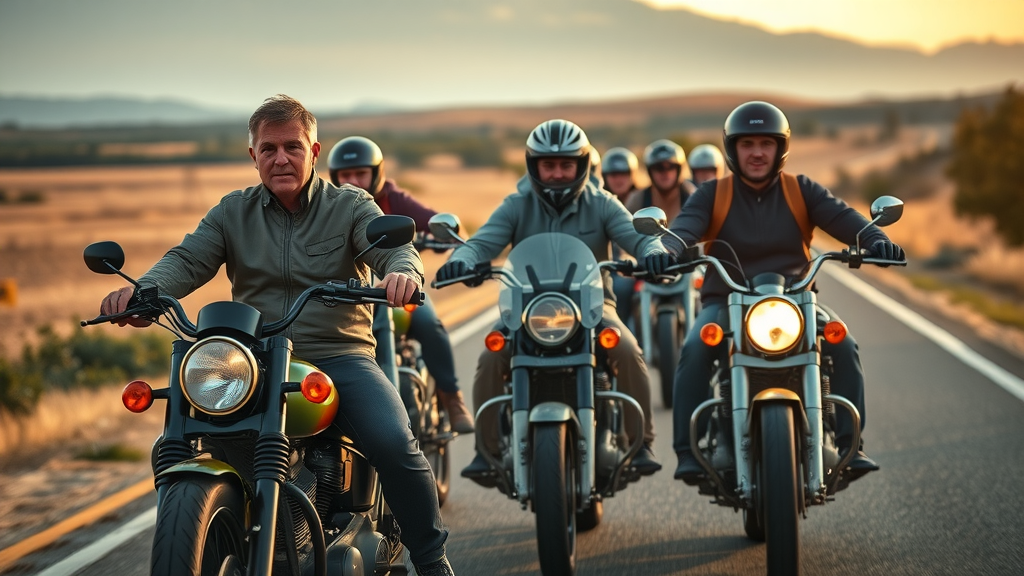
Effective Braking, Cornering, and Swerving
Emergency braking and precise cornering are non-negotiable elements of safe riding techniques . Practice using both your front and rear brakes smoothly to execute emergency stops without losing control. In panic situations, the natural impulse is to squeeze the brake lever hard—proper training helps you modulate the pressure and avoid wheel lock-up.
- Braking tips for emergencies
- Cornering with confidence
- Safe swerving tactics for motorcycle riders
Developing confidence in cornering involves looking through the curve, adjusting your lean angle, and matching your speed to conditions. If a sudden obstacle appears, use a controlled swerve—push the handlebars in the direction you wish to go and maintain throttle blip for stability. Continuing education through online courses or in-person workshops on advanced riding will refine these core motorcycle safety maneuvers for all skill levels.
Online Courses and Resources to Improve Motorcycle Safety
Certified Safe Riding Techniques Courses
Today, expert motorcycle safety training is more accessible than ever. Top-rated online courses from the Motorcycle Safety Foundation (MSF), state agencies, and national motorcycle clubs offer comprehensive overviews—from basic safe riding to advanced riding drills. Many include modules focused on defensive motorcycle habits and emergency maneuvers. Whether you’re just starting or have years of experience, continuing education ensures you never stop improving as a motorcycle rider.
- Top rated online motorcycle safety courses
- Continuing education for motorcycle riders
Online courses also allow you to practice at your own pace, review crucial motorcycle safety content, and ultimately improve your chances of a safe ride. Many insurance companies reward completion with discounts, recognizing that ongoing training helps save lives and reduces the risk of crashes on the open road.
Recommended Reading and Community Resources
Besides online courses, numerous motorcycle rider forums and organizations provide invaluable reading lists, ride safe guides, and support. Joining groups like the American Motorcyclist Association or subscribing to motorcycle safety newsletters gives you access to up-to-date tips, recall alerts, and events focused on advanced riding skills. Community engagement fosters accountability and encourages a culture of safety among all motorcycle riders.
Engaging in discussions with experienced riders can provide insights that can't be found in textbooks. Case studies on collision traps, escape paths, or high vis apparel choices offer practical wisdom honed over thousands of miles—helping new and veteran riders alike ride safe and improve motorcycle safety for all.
Essential Tips: Safe Riding Techniques for All Motorcycle Riders
- Adapt riding techniques for different road conditions
- Importance of motorcycle maintenance
- Staying alert in high-risk scenarios
To keep safe riding techniques second nature, always adjust your approach for varying conditions. Wet or uneven roads demand lower speeds, softer throttle blip, and increased spacing. Keeping your bike in tip-top shape—checking everything from fluid levels to the front tire—keeps potential problems at bay. Finally, staying aware of high-risk scenarios, such as intersections or stretches with poor visibility, prevents many crashes before they can begin.
| Safe Riding Techniques | Common Riding Mistakes |
|---|---|
| Maintain proper lane position | Lingering in blind spots |
| Use full protective gear/high vis clothing | Wearing minimal protective gear |
| Anticipate and avoid collision traps | Riding too close to vehicles |
| Regular pre-ride inspections | Ignoring maintenance/fluid levels |
| Continuous skills improvement (online courses) | Relying solely on past experience |
Navigating Adverse Weather and Nighttime Conditions with Safe Riding Techniques
- Adjusting speed and tactics for rain, fog, and darkness
- Equipment for increased motorcycle safety at night
Weather dramatically impacts stability and visibility when riding a motorcycle. When rain, fog, or nighttime falls, reduce speed, increase following distance, and use high vis reflective gear and auxiliary lights. These adjustments maximize your presence on the road and provide more margin for emergency stops. Don't hesitate to delay or reroute a ride if conditions seem unsafe—sometimes, the best safe riding technique is to wait for a better day.
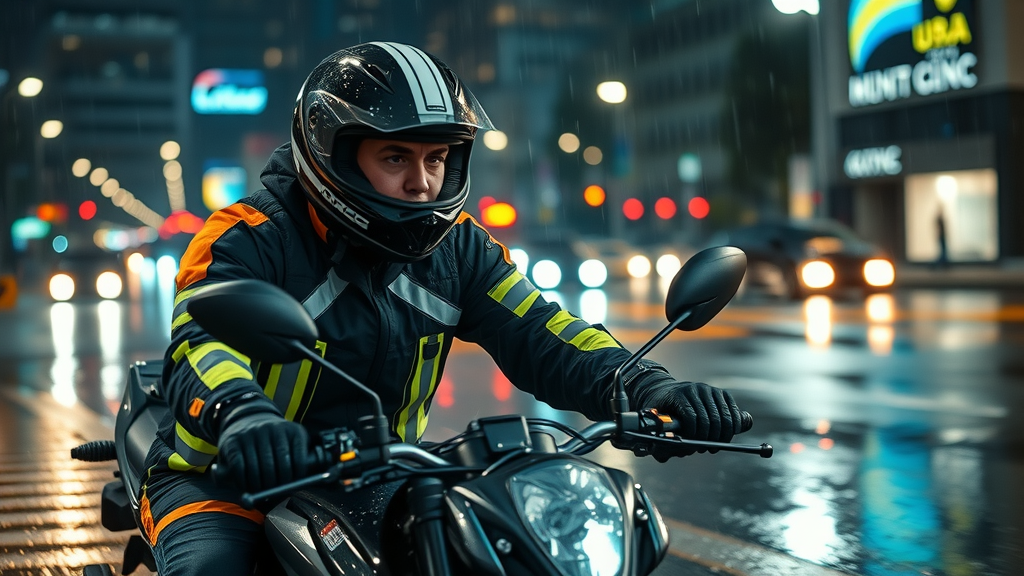
Protective Gear and Its Role in Safe Riding Techniques
- Choosing the right helmet, gloves, and boots
- Importance of high-visibility clothing
- Safety gear innovations for motorcycle riders
Quality protective gear is your frontline defense. Opt for DOT-approved helmets, armored jackets, gloves, and reinforced boots. Gear with high vis panels or reflective stripes ensures you stand out to car drivers, especially at night or in low visibility areas. Innovations such as airbag vests and smart helmets, which integrate heads-up displays and emergency contacts, boost overall motorcycle safety for both solo rides and group rides.

Understanding Motorist Behavior: Sharing the Road Safely with Other Vehicles
- Reading traffic patterns
- Minimizing blind spot risks
- Communicating intentions to other drivers
A huge part of safe riding techniques is interpreting the behavior of car drivers and trucks before they make their move. Always keep out of known blind spots and anticipate sudden lane changes. Use deliberate hand signals, flash your high beams when necessary, and make eye contact when possible to ensure car drivers acknowledge your presence. This form of communication drastically reduces collision traps and keeps both the motorcycle rider and car drivers safer.

"Surviving on two wheels demands respect for the rules, constant vigilance, and disciplined application of safe riding techniques." — Veteran Motorcycle Instructor
Real-World Success Stories: Motorcycle Riders Who Avoided Crashes Using Safe Riding Techniques
Countless motorcycle riders owe their well-being to disciplined safe riding techniques . Consider the story of Mark, a seasoned rider who narrowly avoided a serious accident by anticipating a car driver merging unexpectedly on the highway. By maintaining his lane position, keeping an open escape path, and keeping a cool head under pressure, he swerved with control, avoiding disaster. These success stories underscore the power of defensive riding—where preparedness and awareness of motorcycling provide riders with the split-second reaction time needed to save lives.

Frequently Asked Questions about Safe Riding Techniques
What is the safest riding formation?
- The safest riding formation is usually the staggered formation, which maximizes visibility and space for motorcycle riders in groups.
The staggered formation allows each motorcycle rider in a group to have their own space on the open road, better visibility of hazards, and more room to maneuver if a car driver changes direction suddenly. It reduces the risk of collision traps and improves overall group ride safety.
How do you develop safe riding skills?
- Consistent practice, formal training, acknowledging personal limits, and studying advanced motorcycle safety materials are key to skill development.
Safe riding skills don’t develop by accident. Riders should invest time in local or online courses, practice advanced riding drills regularly, and seek feedback from experienced motorcycle riders. Recognizing areas for improvement and never becoming complacent ensures you continue to ride safe at every experience level.
What are the tips for safe motorcycle riding?
- Wear full protective gear, follow traffic laws, keep a safe distance, and continuously scan your surroundings.
Always wear a helmet, gloves, boots, and high vis clothing for maximum protection. Ride defensively, stay aware of upcoming intersections and parked vehicles, and always be prepared to implement safe riding techniques if a car driver acts unpredictably. These methods dramatically increase motorcycle safety and reduce your odds of preventable crashes.
How to be a safe rider?
- Develop defensive driving habits, undergo regular training, remain alert, keep your motorcycle in top condition, and adhere to safe riding techniques.
The foundation for being a safe motorcycle rider is a mix of attitude, consistent training, and regular motorcycle maintenance. Routinely review your performance, attend advanced riding or safety foundation workshops, and encourage others to embrace motorcycle safety as a lifestyle, not just a practice.
Expert Recommendations: Proven Ways to Make Safe Riding Second Nature
- Practice advanced safe riding techniques regularly
- Leverage online courses for ongoing learning
- Join motorcycle safety communities
Integrate safe riding drills into every ride. Online courses from reputable sources like the Motorcycle Safety Foundation offer structured lessons and advanced modules, while local motorcycle clubs provide real-world feedback and community motivation. Making these activities a habit transforms good intentions into lasting, reliable riding habits.
Encouragement and accountability from motorcycle safety communities help you remain vigilant, up-to-date, and inspired to continuously improve your defensive motorcycle riding strategy—key in keeping every open road journey a safe ride, no matter the destination.
Motorcycle Safety: The Critical Role of Attitude and Mindset in Safe Riding Techniques
- How self-discipline impacts motorcycle safety
- The psychology of risk avoidance
- Encouragement for continuous improvement
Safe riding techniques originate in the mind before they ever power a front tire. Riders who approach motorcycle safety with seriousness, routine, and self-discipline are far better equipped to handle real-world challenges. A disciplined mindset means never taking shortcuts, always plan escape paths, and resist the urge to show off, even among peers.

Awareness of motorcycling psychology is crucial—understand your limits, recognize fatigue, and avoid riding under stress. Those who treat every ride as a learning opportunity and stay committed to growth ultimately experience more freedom and joy on the open road while avoiding dangerous crashes.
"Safe riding techniques aren’t just about skill—they reflect a lifelong commitment to learning and responsibility on the road."
Your Roadmap to Safer Journeys: Action Steps Every Motorcycle Rider Can Take Now
- Select an online motorcycle safety course
- Assess your current riding practices
- Create a monthly safe riding improvement plan
- Encourage fellow motorcycle riders to prioritize motorcycle safety
Making motorcycle safety second nature is about acting, not just reading. Start today: sign up for an online course, review the basics of your motorcycle riding habits, and develop a personal improvement plan. Share your knowledge, stories, and resources with other motorcycle riders—together, a culture of safety grows community-wide.
Take Charge of Your Riding Safety—Start Mastering Safe Riding Techniques Today
Every journey on your motorcycle is a chance to practice and perfect safe riding techniques . Commit to regular training, self-assessment, and mindful riding to dodge dangerous crashes and create safer roads for everyone. Your next ride can change your life—make it a safe one.
 Add Row
Add Row  Add
Add 



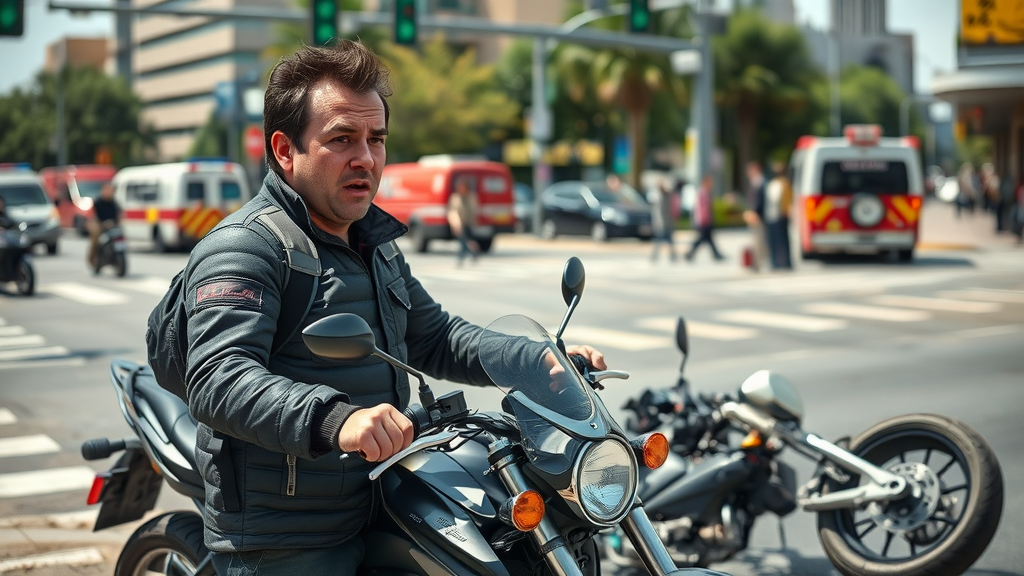
Write A Comment